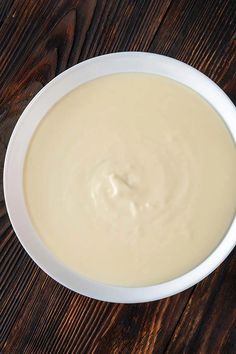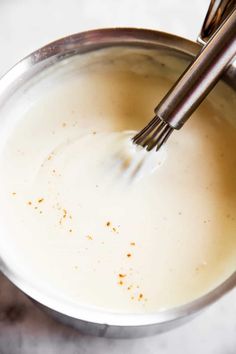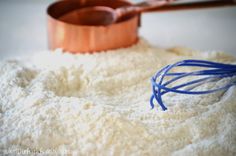How Do You Make a White Flour Roux Without Flour?

Roux is a critical ingredient in many recipes, including Mac and Cheese, gumbo, gravy, and chowders. Flour is also an essential component of Roux. It’s what gives your cuisine its texture, whether it’s thick, nutty, silky, or rich.
A common misperception is that a roux cannot be made without flour.
While this is somewhat true, a roux can also be made without flour. So, whether you’re out of flour or looking for a gluten-free roux, you’ve come to the correct place!
So, without flour, how do you build a roux?
The best technique to make a roux without flour is to use the same recipe and substitute flour with other ingredients. No-flour roux recipes have popped out due to the growing popularity of gluten-free dishes.
Continue reading to learn how to make a roux without flour.
What Can I Substitute for Flour in a Roux?

Don’t worry if you’re short of flour or prefer a gluten-free recipe. Even if you don’t have any flour, you can still prepare a roux.
Instead, arrowroot or potato starch can be used. You can also use buckwheat, rice, potato, or barley starch. It isn’t the best thickening method, but it gets the job done.
Whey protein is a good option if your primary focus is your health. This, too, does not give the same thickening and browning results.
To make a brown or dark roux, add additional seasoning, which has shown to be a game-changer in the roux-making process!
What exactly is Roux?
Roux is a smooth paste that thickens numerous sauces, soups, and gravies. It is French cuisine. Flour and fat (butter/oil) are the main ingredients. The primary goal of this mixture is to make a rich, silky, and thick consistency in a recipe.
The first usage of Roux as a thickening may be dated back to the court of Sun King in the 17th century. The French colonists brought it to the United States, which has since become an essential ingredient of Cajun cooking.
What Are the Different Rouxes?
Roux is divided into four categories, each named for its hue. They have the same ingredients but cook for different amounts of time.
Roux Blanc (White Roux)
It is the most popular Roux, and it’s used in a lot of cheese sauces, quick soups, and béchamel. It is the first stage of roux formation following basic cooking, and it is used to remove the Roux’s raw flavor.
This form of Roux has a gritty texture. It is lighter in color than when the ingredients were initially being combined.
Roux Blonde
It is formed when the white Roux is cooked a bit longer and thinner than the white Roux. It’s more of a brown or off-white tint.
The flavor is more buttery, with a toasty or popcorn-like scent.
It’s a versatile roux best used for rapid pan sauces like velouté. Other gravies, stews, soups, and sauces can all benefit from it.
Roux (brown)
This Roux is caramel-colored and has a more decadent scent and nutty flavor. It’s used in soups and stews that need to simmer for a long time.
Brown roux is also significantly thinner than other roux kinds.
Roux Noir
It is the darkest and most flavorful variety of Roux.
It has the color and flavor of melted milk chocolate. It is more of a flavor enhancer than a thickener. The Roux’s thickening strength reduces as it cooks, but its flavor improves.
As a result, white Roux is the most effective in thickening dishes, but it has a bland flavor. On the other hand, dark Roux is utilized for flavor rather than thickening.
Recipe for a Flourless Roux

Roux isn’t difficult to make.
The recipe for Roux without flour is essentially the same as for Roux with flour. To make a thickening that works without flour, follow the methods below.
Because of the natural flavor of butter, most roux recipes include it in the ingredient list. However, either vegetable or canola oil should be used to achieve a brown roux.
To reduce the flavor of the higher-cooked Roux, you can also use bacon grease or melted shortening. The most outstanding results can be obtained by following the procedures below.
Pour the butter into a pot as needed (or oil). Allow the butter to melt over a medium heat setting.
Now, toss equal amounts of any of the substitutes mentioned earlier into the flour, constantly stirring—season to taste with salt and pepper.
The mixture becomes bubbling and somewhat foamy after a few minutes. It would have thickened into a thick paste with no more raw aroma. The white Roux is what you’re looking for.
Continue stirring and cooking under medium heat for another 10 minutes to form a blond roux. The ability to thicken declines, but the flavor undoubtedly improves.
Continue cooking for another 20 minutes to make a brown roux. It has a smokey flavor and scent and a nutty flavor.
You can get a dark roux by repeating the process for another 15 minutes. Keep in mind that the quantity of this will reduce as it cooks. As a result, add slightly more ingredients than you think you’ll need.
What Is the Best Way to Make a Roux Without Cornstarch or Flour?
It’s not difficult to make Roux without flour.
Except for the flour, as previously noted, the recipe is essentially the same. Instead, arrowroot, potato, buckwheat, rice, or barley starch are employed as a replacement.
To summarize, fill a saucepan halfway with oil or butter and halfway with flour alternative. Continue to stir until the color, aroma, and flavor are as desired.
As a thickener, what can be used instead of flour?

Tapioca flour, arrowroot, potato, barley, buckwheat starch, chia seeds, and flax seeds can all be used instead of flour as a thickening.
Natural starches, such as potatoes, buckwheat, and barley, are transparent and tasteless. Sauces, stews, and soups benefit from them. However, they shouldn’t be used in recipes that need boiling. Tapioca starch is a gluten-free, sweet alternative.
Arrowroot has no flavor, making it ideal for sauces that aren’t dairy-based. If you intend to keep the frozen sauces, this is ideal. It’s worth noting that cooking it too long can limit its potential to thicken. Lower temps are ideal for this.
Flaxseed is a vegan alternative to flour, and it’s arguably the finest. Use two times as much flaxseed as flour. Chia seeds can be used in place of all-purpose flour in the same way.
Related Issues
Can you make a Roux with cornstarch?
No, cornstarch will not create a roux. When mixed with water, it creates a slurry, which thickens your food when added to it.
What’s the best way to create a fast Roux?
Roux (excluding brown/dark Roux) is a quick process in and of itself.
To do so, heat butter or oil in a saucepan and stir in an equal amount of flour or one replacement, as mentioned earlier. Stir constantly until you obtain the Roux you want.











